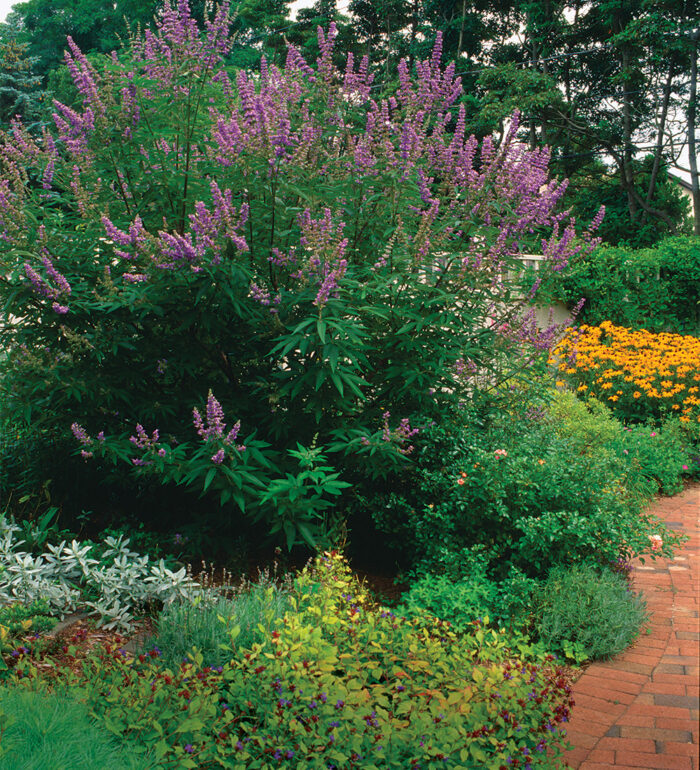
It’s time to admit it: The middle of summer is everyone’s least favorite time to be in the garden—well, maybe not to actually be in the garden, but definitely to work in the garden. By this time of year, the squirrels have started to eat your tomatoes, the ground is hard, the mosquitoes are out, and, quite honestly, if you don’t have your garden looking good by now, all the sweat-burned eyes in the world aren’t going to improve the situation much until things cool off and the rain returns.
Despite all of this, summer is the perfect time to enjoy the garden—when all the planning from last year; all the dark winter evenings spent drooling over plant catalogs; and all the spring hauling, ripping, and digging really pay off. This is when we dream of sweeping gracefully around the garden, martini in hand and envious friends in tow, soaking up the accolades for a show that most honest gardeners (if there is such a group) would admit is only partially their intentional doing. Life is truly good in the summer garden.
But to achieve summer-garden nirvana takes true inspiration and a detailed plan. And this is where the workhorses of the dog days truly earn their keep. Of course, I am talking about those seemingly indestructible, bombproof shrubs. The following shrubs give it their all during the warmer months, providing fantastic flowers and, in some cases, interesting foliage or fruit as well.
Chaste tree
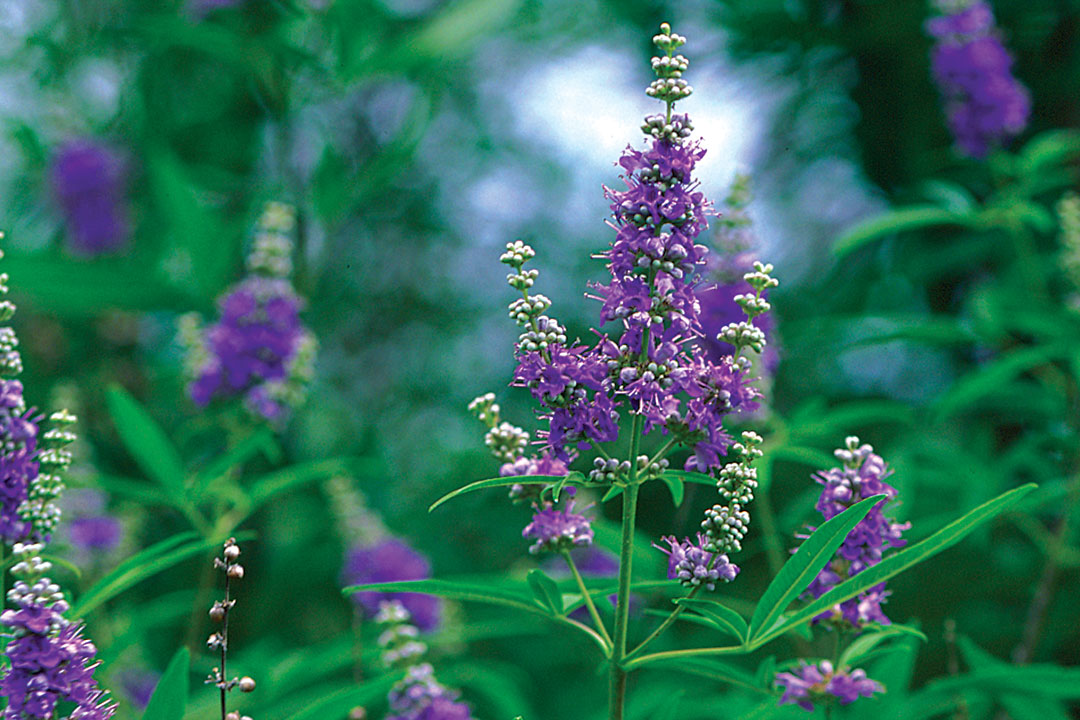
Name: Vitex agnus-castus var. latifolia
Zones: 6–9
Size: 10 to 20 feet tall and wide
Conditions: Full sun; well-drained soil
Chaste tree is a Southern favorite beginning to gain favor across the country. Whether left to grow as a large, multistemmed shrub or cut back annually for a more compact look, this selection is a winner. Fine, lacy leaves are glossy and green. Bright blue flower panicles begin to form in early summer and continue through the heat of the season and into fall. This is a reasonably cold-hardy, deer-resistant woody plant, and while V. agnus-castus is typically considered a Zone 7 plant, the variety latifolia can be grown in Zone 6 and even in southern areas of Zone 5.
But the $64,000 question is the origin of this plant’s name. Apparently, the ancient Greeks used an extract to “calm the male inner fire.” I have no suggestion on how to put that to use in the garden, so just use your imagination.
Blue-mist shrub
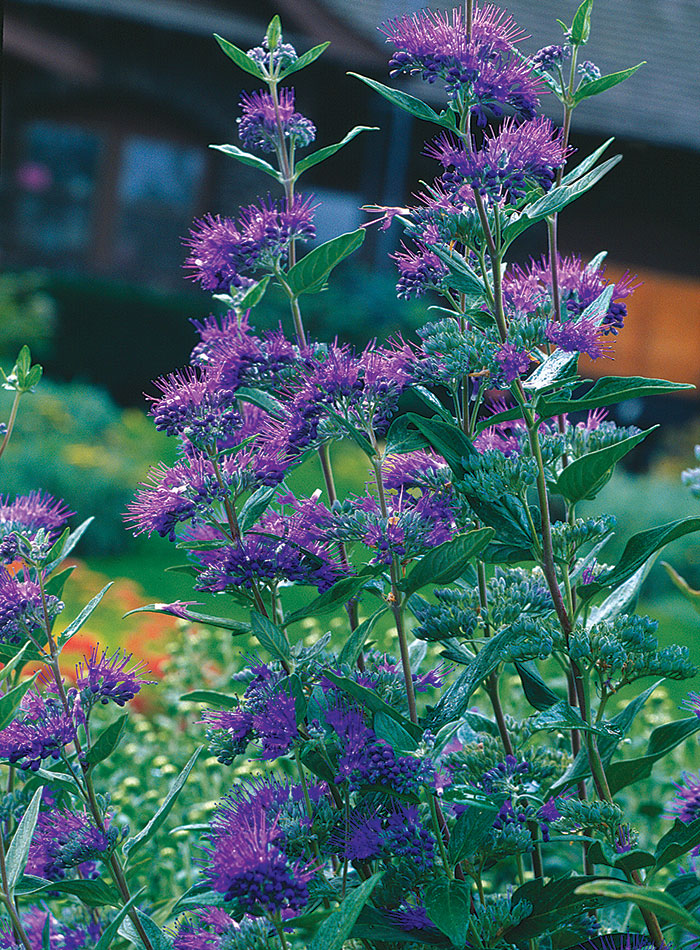
Name: Caryopteris × clandonensis cvs.
Zones: 6–9
Size: 3 feet tall and 5 feet wide
Conditions: Full sun to partial shade; well-drained soil
As the executive director of Yew Dell Gardens in Kentucky, I run around the grounds with our staff late every summer to pick out plants that have taken the worst of the Southern summer and still manage to shine. That small select group of plants always includes blue-mist shrubs. These plants just eat up the heat, the lack of water, and the humidity. They can be short-lived, but they perform so well while in the garden that I firmly believe that no one should be without at least a couple of these gems. Generally, they hang in there nicely for four to five years, sometimes longer. Then one day, after a wet winter, you realize that your plant is missing.
Blue-mist shrubs are low-growing, fine-textured mounds that form fabulous masses that offer dependable foliage as well as characteristic blue flowers through the mid- and late-summer months. Deer usually steer clear of these beauties. An annual late-winter haircut not only is therapeutic for the gardener but also makes for a stronger and denser shrub the following season. There is a nice selection of cultivars out there that vary in foliage, flower, and growth habit. ‘Longwood Blue’ has been the standard for many years and for good reason. Its medium blue flowers and soft fluffy branching make an excellent addition to any garden.
Chinese buttonbush
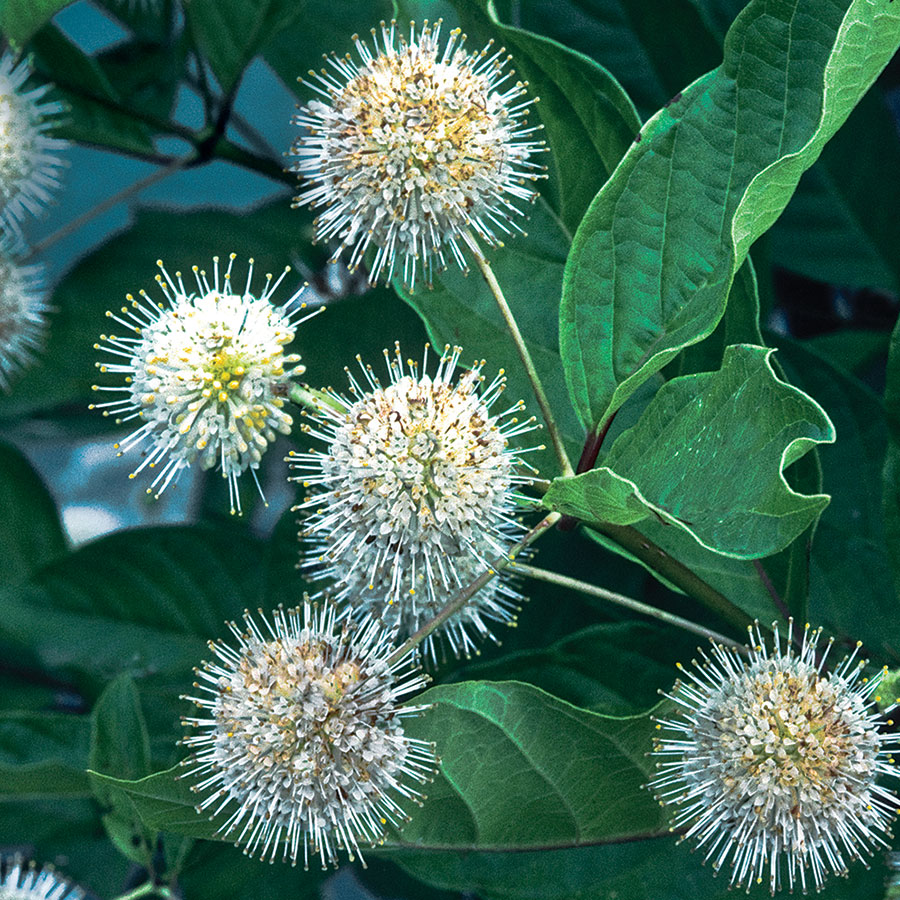
Name: Adina rubella
Zones: 6–9
Size: 6 to 8 feet tall and wide
Conditions: Full sun to partial shade; moist, well-drained soil
This little-known jewel is closely related to the North American buttonbush (Cephalanthus occidentalis, Zones 5–10) and is grown primarily for its small, glossy leaves and nice crop of early to midsummer Sputnik-like flowers. It tends to have finer-textured foliage and stay smaller and more compact than its native cousin. The little, creamy white balls last for several weeks before yielding to small brown fruit clusters. The unusual flowers are great for generating conversation and stumping your garden-geek friends. Culturally, this plant is tolerant of dry shade, and as far as I can tell, there is not a single insect or disease that bothers Chinese buttonbush.
Smoke bush
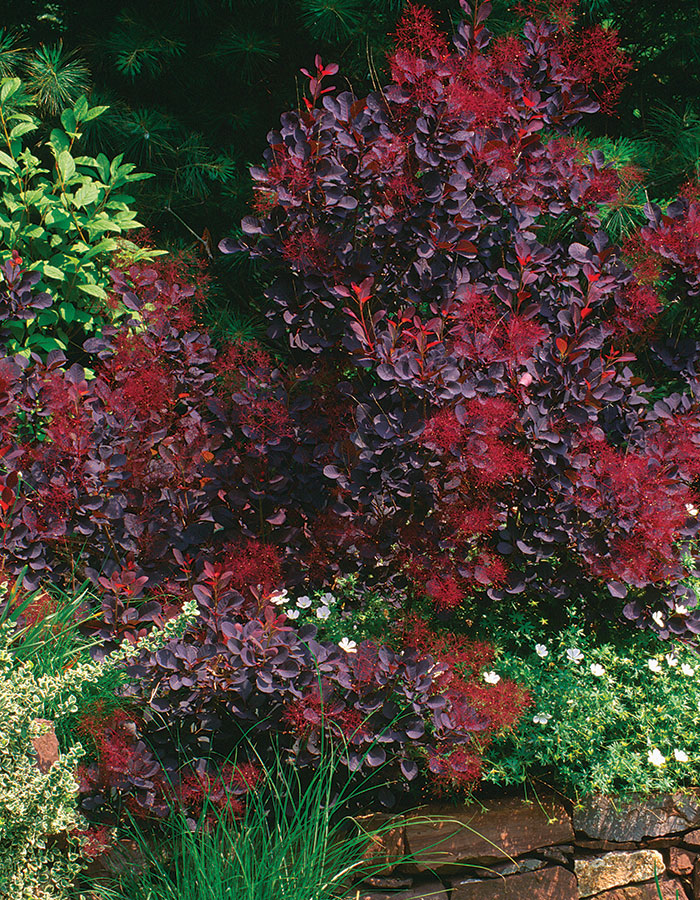
Name: Cotinus coggygria and cvs.
Zones: 5–9
Size: Up to 15 feet tall and wide
Conditions: Full sun to partial shade; moist, well-drained soil
Smoke bush is a favorite of many gardeners. While this plant is often grown for its rather unusual smoky, plumelike panicles, its foliage is also spectacular. Smoke bush can be grown as a large shrub, but it is best when cut back severely each year. Depending on the cultivar, the leaves can be burgundy, green, or chartreuse. The best for deep burgundy color and overall vigor is the popular ‘Royal Purple’. Deer tend to avoid this shrub.
Summer Wine™ ninebark
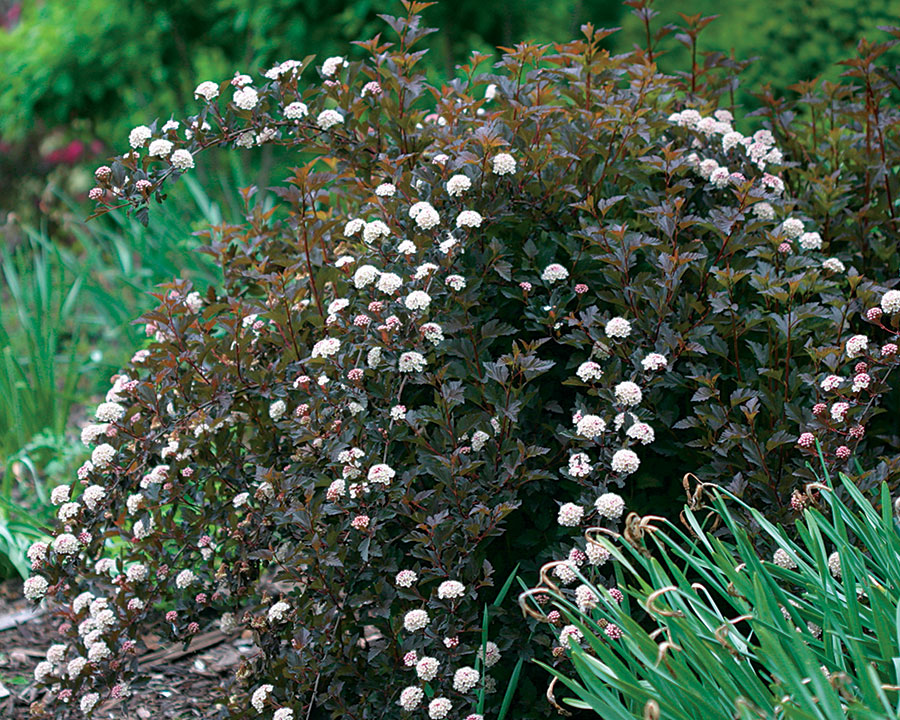
Name: Physocarpus opulifolius ‘Seward’
Zones: 3–7
Size: 5 to 6 feet tall and 4 to 5 feet wide
Conditions: Full sun; moist, well-drained soil
Many gardeners will know ninebark as a rather nondescript, green-leaved shrub with “oh-by-the-way” white flowers and unexciting fall fruit. About the only thing going for it is its nuclear toughness. Fortunately, there is a long list of burgundy- or gold-foliaged selections that add a great focal point to the summer border. Of these, the best overall performer is ‘Seward’, sold under the trademark name Summer Wine™. This selection has outstanding burgundy leaves all summer long and produces striking, soft pink blossoms in early summer. The combination is quite stunning. ‘Seward’ also offers the gardener a nice compact growth habit that is an improvement on the purple octopus growth of other cultivars like ‘Diabolo’.
Don’t sweat summer planting
Summer can be a tricky time of year to plant. With soaring temperatures and oppressive humidity, gardeners are understandably fearful to make any sort of investment in the garden. Keep these nuggets of wisdom in mind when planting in the hottest season of the year.
Plant ’em if you’ve got ’em.
Almost all plants are happier in the ground than they are in a container. Believe me, your garden is a lot nicer environment for a plant than a hot nursery lot or your driveway, with the black container frying the roots at temperatures over 100°F. In short, plant them if you can keep them watered.
Cough up some compost.
My rule is that I never put a spade in the ground, especially in summer, without adding a healthy serving of compost. Whether you are planting, removing, or just testing the new edge on your sharpened spade, take the time to feed the soil with organic matter. The amended soil will erode less, hold water and air better, and generally grow more vigorous plants. Sure this tip is a no-brainer, but how often do we actually practice what we preach?
Make sure it’s worth it.
How often do those severely pot-bound, summer-sale, garden-center plants survive to maturity despite all the root slicing, teasing, and other horticultural manipulations? Sometimes a bargain is nothing of the sort. If a container-grown plant is a little crowded in the pot, that’s one thing. When it comes out of the container as a black hole of compacted roots, it might be better to use it as future compost.
False spirea
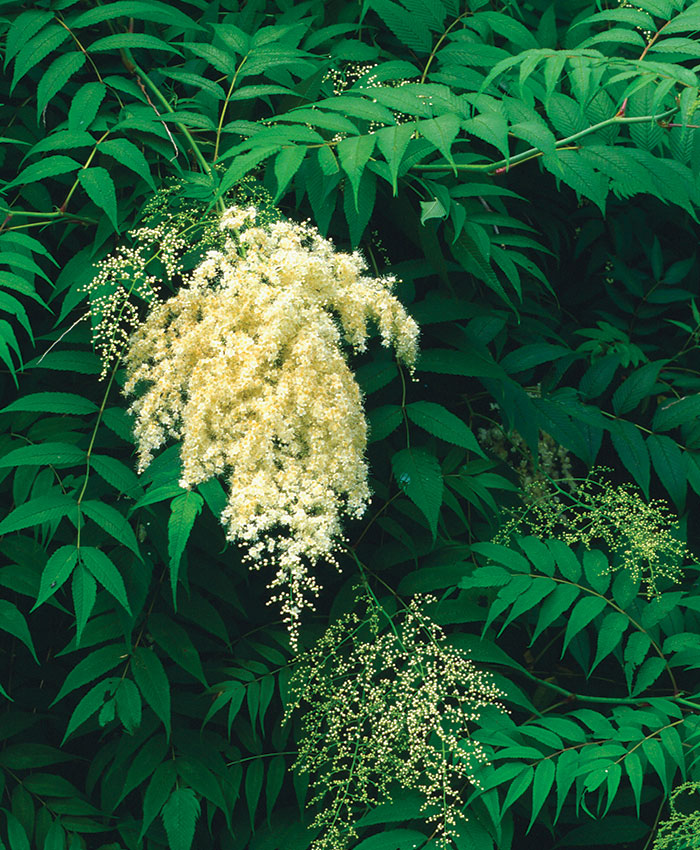
Name: Sorbaria sorbifolia
Zones: 2–9
Size: 6 feet tall and 10 feet wide
Conditions: Full sun to partial shade; moist, well-drained soil
If you like plants that stay in tidy, little, assigned corners, this is not the plant for you. But if you have a large space to fill and love plants with attitude, this is your baby. False spireas form large masses of arching branches that are covered with green pinnate leaves. Billowy white sprays of flowers appear in mid to late summer. Mature plants spread where you let them. They are unbelievably durable and will take just about any soil thrown in their general direction. An annual or occasional decapitation to the ground is a good idea because it helps keep the plant under control. There is a wide range of closely related species and selections, but there’s not much difference between them.
Indigofera
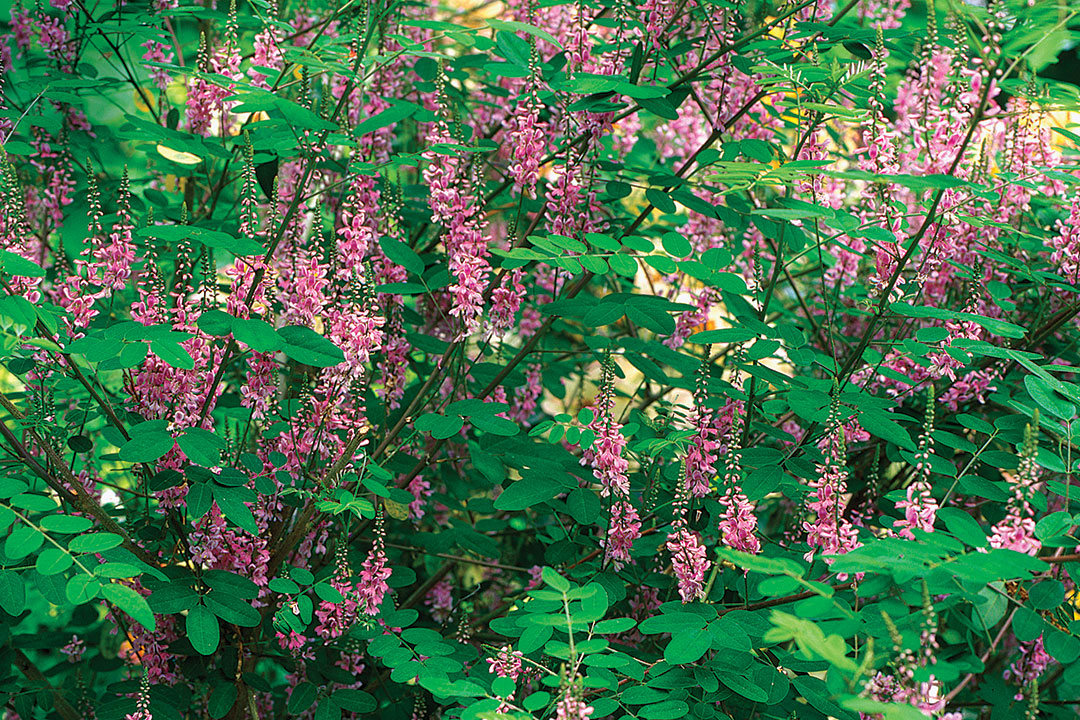
Name: Indigofera amblyantha
Zones: 6–9
Size: 6 feet tall and 8 feet wide
Conditions: Full sun; moist, well-drained soil
Trying to find a common name for this plant is nearly impossible. Despite the lack of PR appeal, this tall, arching, lacy-textured shrub is a winner. Indigofera loves the heat, loves the sun, and shuns most garden pests. This rather obscure member of the pea family sports erect pink spikes of flowers starting in May and continues to bloom sporadically through much of the summer. Although this plant has a light, ethereal look, it is actually tougher than nails. Indigofera fits into a category that I call “wonderful whackables,” composed of shrubs that benefit from being pruned to the ground each year. I like to give all newly planted whackables a good year or so before I start abusing them. This shrub can probably take an earlier thrashing, but it doesn’t hurt to give it a little time to get its sea legs. Another bonus is that deer tend to avoid browsing.
‘Rogers’ bottlebrush buckeye
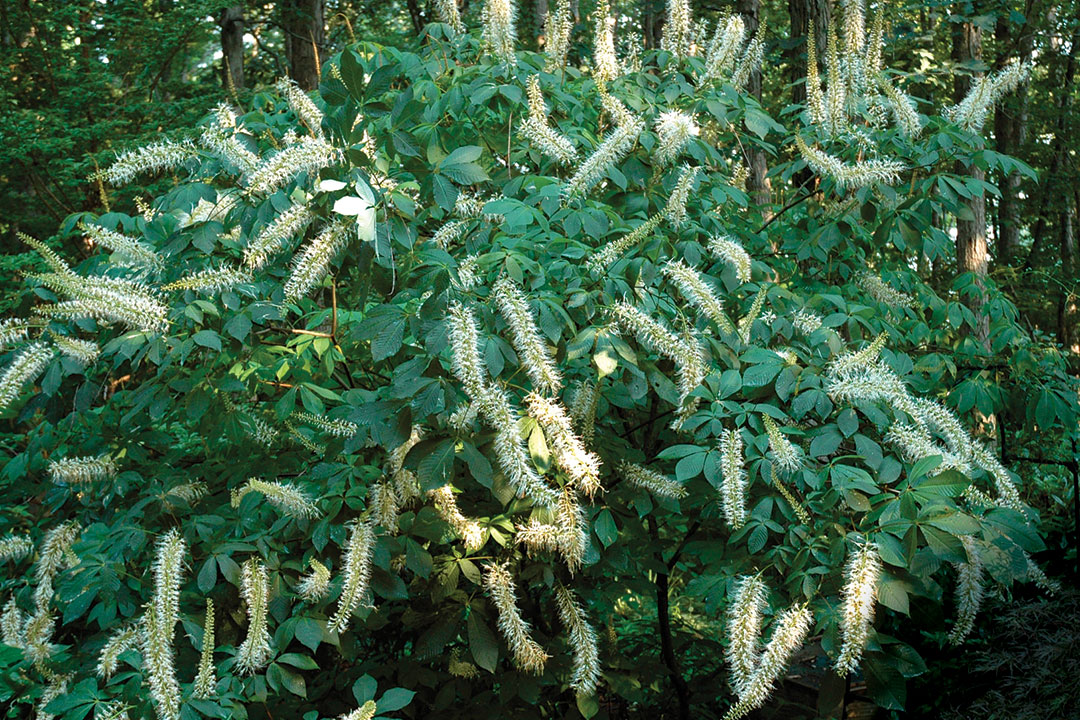
Name: Aesculus parviflora var. serotina ‘Rogers’
Zones: 5–9
Size: Up to 10 feet tall and 15 feet wide
Conditions: Full sun to partial shade; moist, well-drained soil
This shrub is the Richard Petty race-car driver of the summer garden, leading the pack into the season. Bottlebrush buckeye is planted for its early-summer spikes of creamy white flowers atop graceful layers of green leaves that turn gold in autumn. ‘Rogers’ flowers a couple of weeks later than the species and is best noted for its spectacular flower spikes that can be 30 inches or more in length—much larger than the straight species.
This bold, multistemmed suckering shrub is most at home in some light shade but does adapt well to sun if given adequate moisture. In general, this shrub is reasonably deer resistant. Not for the faint-of-heart gardener, ‘Rogers’ bottlebrush buckeye is an enthusiastic grower and will spread by root suckers. But while some may shy away from its hearty habit, this same strength of character makes it a spectacular summer shrub.
Swamp azalea
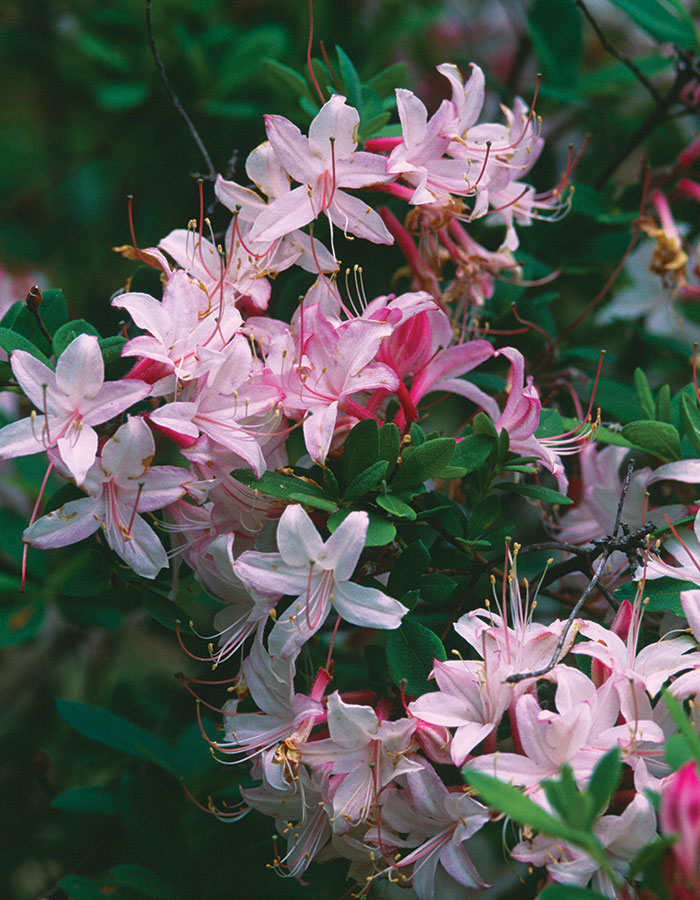
Name: Rhododendron viscosum
Zones: 3–9
Size: 8 feet tall and wide
Conditions: Full sun; moist, acidic, well-drained soil
While there are thousands of great hybrid deciduous rhododendrons floating around the market, it is tough to beat some of the late-blooming North American natives. Swamp azalea is a superb plant that grows from Texas to Maine and just about everywhere in between. It is grown for its sweetly scented, early-summer flowers. Flower colors can range from white to pale yellow to pink, and just a single plant in bloom will fill an entire garden with sweet perfume. Planted in mass, its fine texture, flower display, and super red fall foliage make this shrub truly amazing. Swamp azalea is not a preferred salad-bar item for deer, but if hungry enough, they will munch on it.
Oakleaf hydrangea
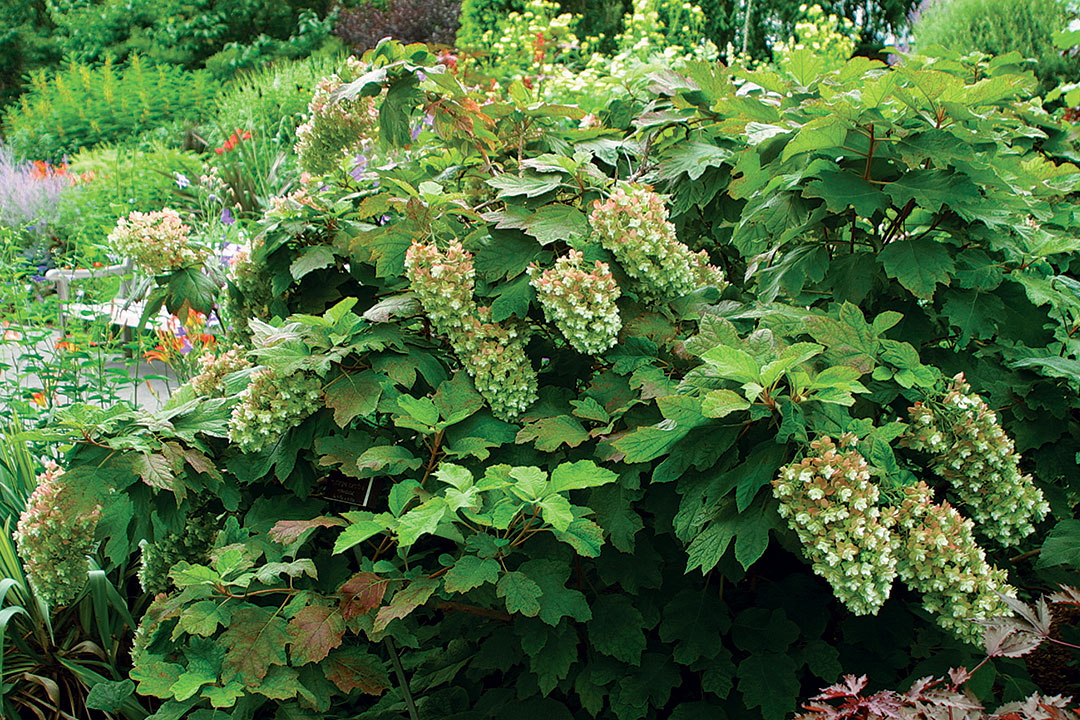
Name: Hydrangea quercifolia and cvs.
Zones: 5–9
Size: Up to 6 feet tall and 8 feet wide
Conditions: Full sun to partial shade; moist, well-drained soil
No shade garden would be complete without oakleaf hydrangea. The bold leaves, stunning white summer blooms, and regal burgundy fall foliage make this plant a must-have. It is easily propagated by cuttings and is fun, although slow, to grow from seed. Aside from an occasional annoying leaf spot in the southern part of its range, it tends to be a durable, clean plant. Another reason to include this species on any summer shrub list is the wide range of cultivars available on the market. Among them is the double-flowered ‘Snowflake’, sure to stop traffic with its incredible blossom displays.
Paul Cappiello is executive director of Yell Dell Gardens in Crestwood, Kentucky.
Sources
- Forestfarm, Williams, OR; 541-846-7269; forestfarm.com
- Fraser’s Thimble Farms, Salt Spring Island, BC; 250-537-5788; thimblefarms.com
- Woodlanders, Aiken, SC; 803-648-7522; woodlanders.net
Fine Gardening Recommended Products

Gilmour 811673-1001 Sprinkler
Fine Gardening receives a commission for items purchased through links on this site, including Amazon Associates and other affiliate advertising programs.
- Adjustable collar for partial- to full-circle coverage
- Dial precisely sets spray distance
- On/off switch eliminates trips from sprinkler to spigot
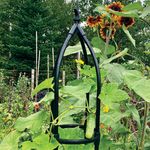
Lee Valley Garden Obelisks
Fine Gardening receives a commission for items purchased through links on this site, including Amazon Associates and other affiliate advertising programs.
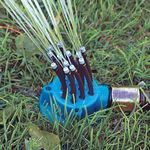
D&X Garden Sprinkler
Fine Gardening receives a commission for items purchased through links on this site, including Amazon Associates and other affiliate advertising programs.
- 12 flexible nozzles that you can set in any direction, simply bend hoses to customize new watering patterns - 360 degree coverage of 3000 sq. ft area
- 3.5 x 4 x 6 inches


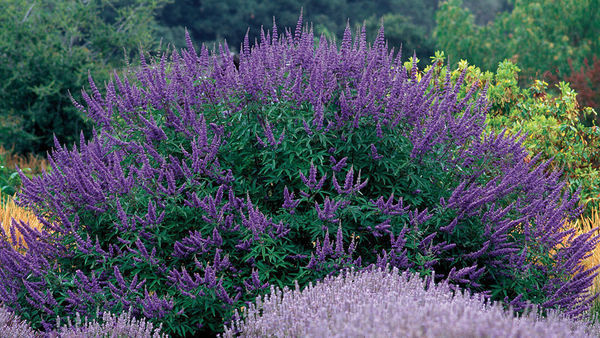
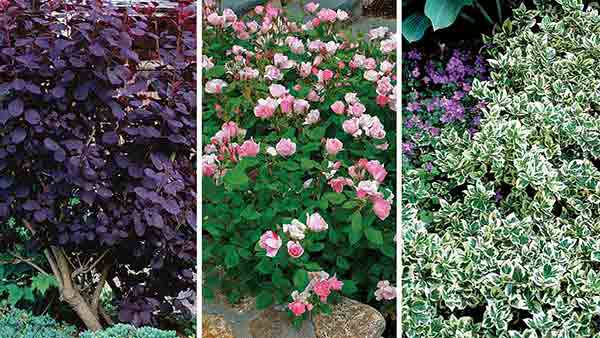
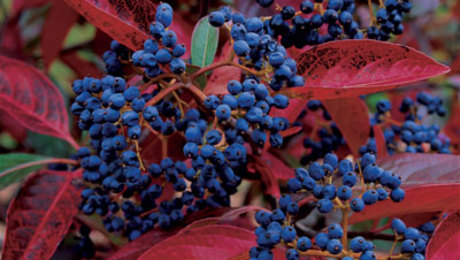
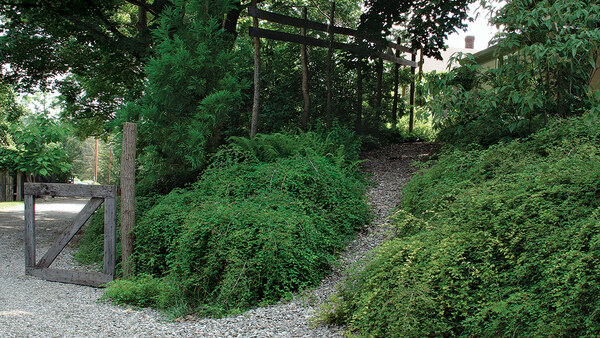
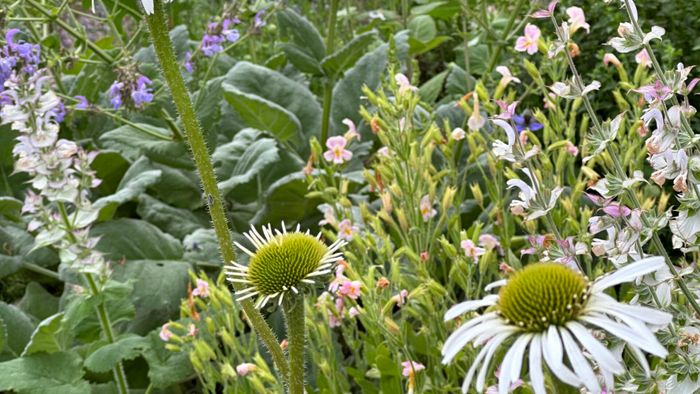
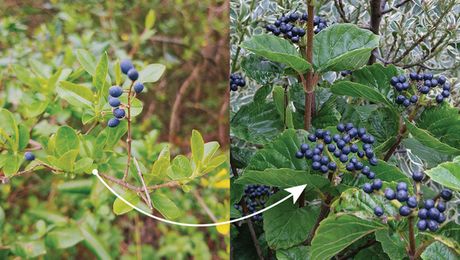
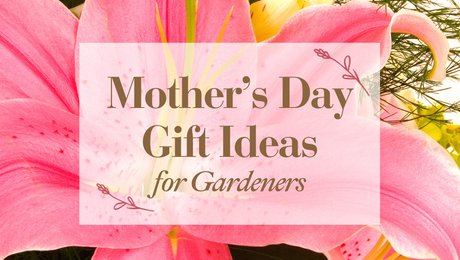










Comments
Amazing Post.. It really helped me to work
http://gardeningflavours.com/shrubs-things-know-grow/
Excellent work
Try yellow waxbells Kirengeshoma Palmata . Zones 4-8, late summer bloom, 3 to 4 1/2 feet tall, makes a nice large clump. Gorgeous foliage, small late summer flowers yellow, but the hummingbirds love it despite the color. You hardly ever see it for some reason. A really nice easy to grow, sturdy shrub.
Log in or create an account to post a comment.
Sign up Log in